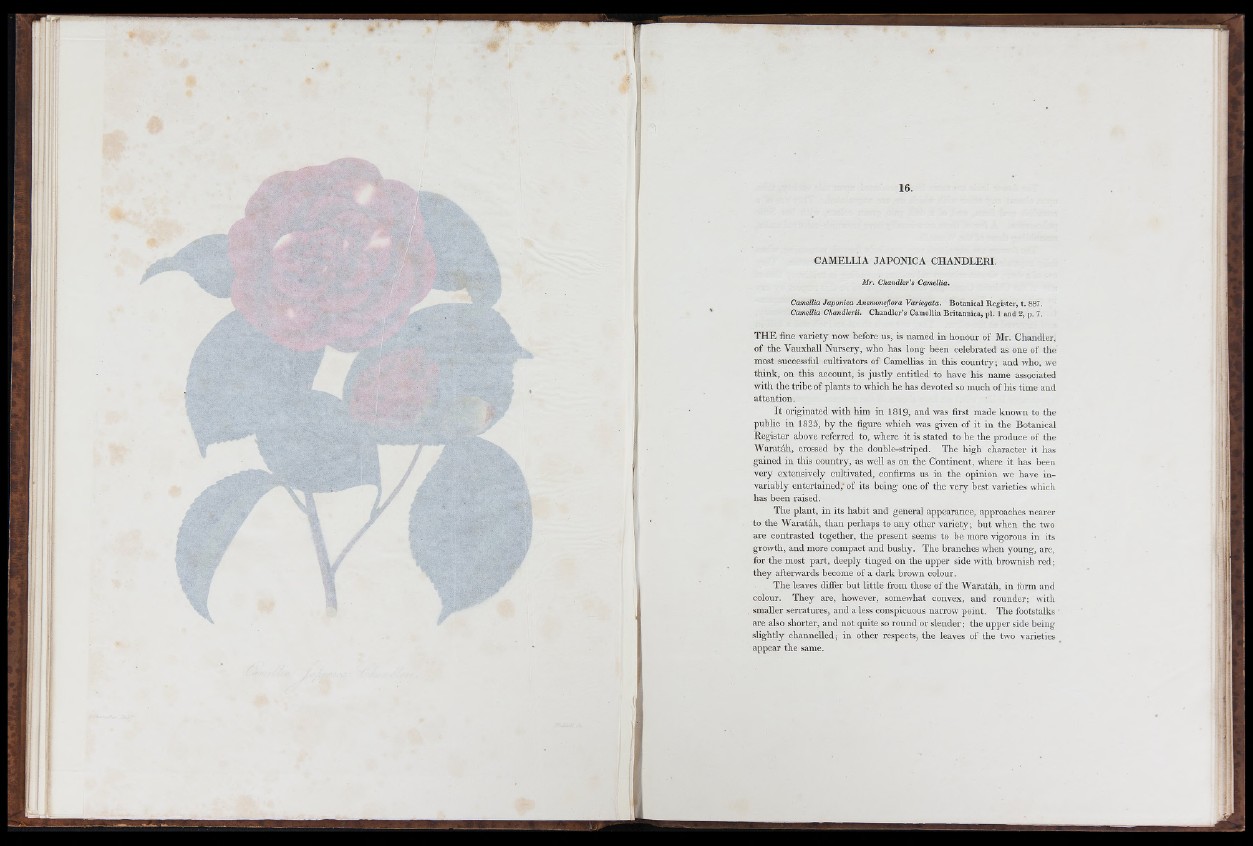
CAMELLIA JAPONICA CHANDLERI.
M r. Chandle r's Camellia.
Camellia Ja p ó n ica Anemoneflora Variegata. B o ta n ic a l R e g is te r , t. 887.
Camellia Chandle rii. C h a n d le r ’s C am e llia B r ita n n ic a , p i. 1 a n d 2, p. 7.
TH E fine variety now before us, is named in honour of Mr. Chandler,
of the Vauxhall Nursery, who has long been celebrated as one of the
most successful cultivators of Camellias in this country; and who, we
th in k , on this account, is justly entitled to have his name associated
with the tribe of plants to which he has devoted so much of his time and
attention.
I t originated with him in 1819, and was first made known to the
public in 1825, by the figure which was given of it in the Botanical
Register above referred to, where it is stated to be the produce of the
Waratáh, crossed by the double-striped. The high character it has
gained in this country, as well as on th e Continent, where it has been
very extensively cultivated, confirms us in the opinion we have invariably
entertained,' of its being one of the very best varieties which
has been raised.
The plant, in its habit and general appearance, approaches nearer
to the Wa ra táh, th an perhaps to any other variety; b u t when the two
are contrasted together, the present seems to be more vigorous in its
growth, and more compact and bushy. The branches when young, are,
for the most part, deeply tinged on the upper side with brownish red ;
they afterwards become o f a dark brown colour.
The leaves differ b u t little from those of the Waratáh, in form and
colour. They are, however, somewhat convex, and rounder; with
smaller serratures, and a less conspicuous narrow point. The footstalks
are also shorter, and not quite so round or slender; the upper side being
slightly channelled; in other respects, the leaves of the two varieties
appear th e same.